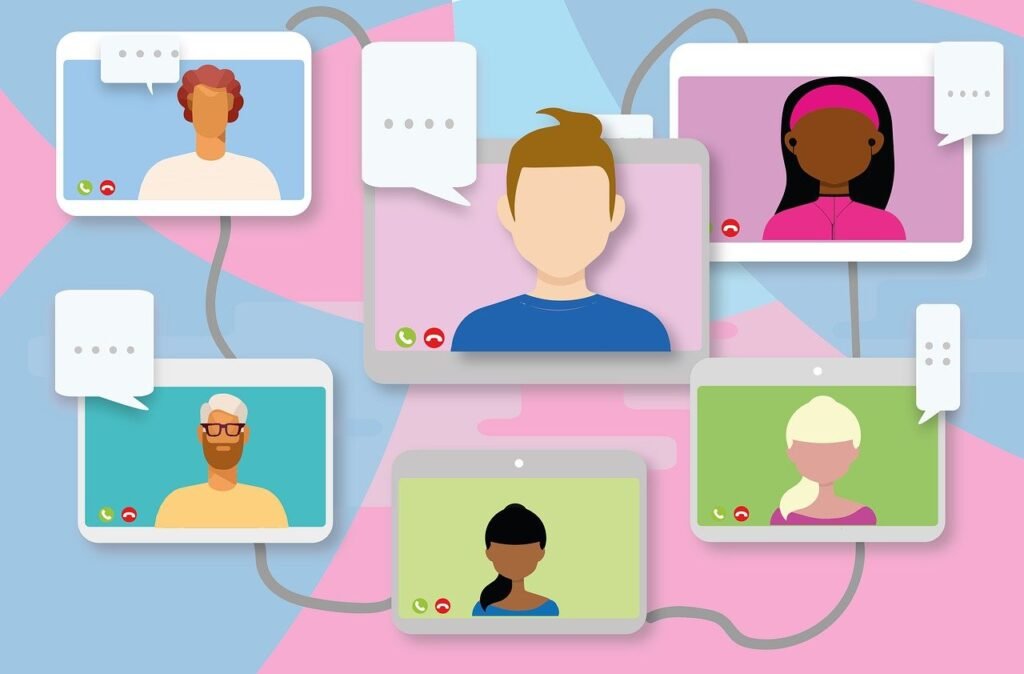This Article has been revised, edited and added to, by Poulomi Chakraborty.
- Static vs. Interactive Content: A Comparison
- Types of Interactive Content and Their Benefits
- Quizzes and Assessments
- Interactive Infographics
- Polls and Surveys
- Calculators
- Interactive Videos
- Augmented Reality (AR)
- Creating Compelling Quizzes and Assessments
- Building Story-Driven Interactive Infographics
- Encouraging Customer Dialogue via Polls and Surveys
- Delivering Immediate Solutions through Calculators
- Immersive Storytelling with Interactive Videos
- Immersive Experiences through Augmented Reality
- Incorporating Interactive Content into Marketing Strategies
- Identify Goals and Target Audience
- Choose the Right Type of Content
- Create Valuable, User-Centric Content
- Integrate with Existing Campaigns
- Analyze and Optimize
- Iterate and Experiment
- Setting Clear Objectives and Mapping Out Goals
- Designing the Customer Journey
- Creating Data-Driven Personalization
- Cross-Promoting Interactive Content Across Channels
- Aligning with Sales and Product Teams
- Refining and Iterating Campaigns
- Actionable Advice for Integrating Interactive Content into Your Marketing Funnel
- Conclusion
Digital marketing is constantly evolving, and as consumers become more discerning about the content they engage with, brands must stay ahead of the curve. Traditional, one-way messaging no longer packs the punch it once did, especially in a world where users expect to interact, contribute, and feel like they’re part of the conversation. This is where interactive content comes into play. Unlike static content, interactive materials encourage user participation, providing immediate feedback and personalizing the user experience in real-time.
Brands leveraging interactive content are finding new ways to captivate their audiences, turning passive viewers into active participants. From quizzes and polls to interactive videos and augmented reality experiences, this dynamic form of engagement isn’t just eye-catching; it’s data-rich and incredibly effective. Let’s dive into how interactive content can power your digital marketing campaigns and why it stands out compared to static content.
Static vs. Interactive Content: A Comparison

When it comes to grabbing attention and fostering engagement, static content—like plain blog articles or banner ads—often falls short. While these traditional formats still have their place, they can sometimes feel like a monologue, lacking the personal touch today’s consumers crave. Static content can inform and persuade, but its one-way communication leaves no room for dialogue or adaptation.
On the other hand, interactive content breaks down the barriers between brand and audience. When users are prompted to interact, whether it’s through answering questions, playing a game, or exploring an immersive environment, they become part of the content itself. This involvement not only keeps them on the page longer but also gives them a sense of ownership over their journey, making the experience memorable.
Engaging vs. Informing
One of the main distinctions between static and interactive content lies in how they engage audiences. Static content excels at informing users, delivering well-structured information they can absorb at their own pace. For example, a detailed guide or blog post can educate readers thoroughly about a specific topic.
Interactive content, by contrast, emphasizes engaging users rather than simply informing them. A quiz might guide users toward a product recommendation based on their answers, or a dynamic infographic could encourage them to explore trends and data points relevant to their interests. This level of involvement makes the information more impactful and memorable.
Adaptability and Personalization
Static content generally offers the same message to all readers, regardless of their background or preferences. While this approach ensures consistency, it can lack resonance with individual users.
Interactive content, however, adapts based on user input. For instance, a chatbot can provide tailored answers to customer queries, while an assessment tool can generate personalized reports. This kind of customization makes users feel understood and valued, fostering brand loyalty.
Data Collection and Insights
Another advantage of interactive content is the wealth of data it generates. When users answer questions, click on different elements, or navigate through personalized journeys, their behavior offers valuable insights. Brands can analyze this data to understand user preferences, identify popular features, and refine their marketing strategies accordingly.
In contrast, static content generally provides less granular data. Metrics like page views or average time on page can indicate interest, but they don’t reveal which specific elements resonated with users or which aspects left them disengaged.
The Role of Content in User Engagement
For startup founders looking to make a significant impact in their industry, understanding the nuances between static and interactive content can be pivotal. While static content such as blogs, white papers, and standard videos serve as the backbone for conveying foundational knowledge and insights about your products or services, interactive content steps beyond this by transforming how the information is consumed and interacted with by the audience.
Static content sets the stage for knowledge dissemination, offering depth and consistency in messaging. This can be crucial for startups that need to establish authority and credibility in their space. However, the passive nature of static content often limits deeper user engagement, which is essential for fostering connections and driving conversions.
Enhancing User Experience through Interactive Strategies
Interactive content, with its dynamic approach, not only retains the user’s attention but also involves them, making the experience more personal and memorable. This can be particularly strategic for startups as it enables potential customers to not only hear about the benefits of a product or service but also to experience them in some form. For example, an interactive demo of a software tool not only tells but also shows how it solves a problem, giving a hands-on experience that static content simply cannot match.
Strategic Integration for Startups
When integrating interactive content, startup founders should focus on creating experiences that can seamlessly guide potential customers from curiosity to conviction. This involves not only presenting information but also using interactive elements to solve real problems that potential customers might face. For instance, if a startup offers a financial planning service, an interactive calculator that allows users to input their financial goals to receive personalized saving strategies can be much more effective than a standard article explaining saving techniques.
Moreover, interactive content can serve as a feedback loop for startups, offering real-time insights into what users find helpful or engaging. This can be strategically used to iterate on product features or content strategy much more rapidly than static content analysis allows.
Creating a Comprehensive Engagement Plan
The ultimate goal for any startup is to turn interest into action. Interactive content can strategically bridge the gap between user engagement and conversion. By designing interactive pathways that follow the user’s journey from initial awareness to making a purchasing decision, startups can effectively nudge users closer to conversion while providing them with value every step of the way.
To leverage interactive content effectively, startups should think beyond mere novelty and focus on relevance and utility. Each interactive piece should have a clear purpose and a defined role within the broader content strategy, aiming to engage users at various points of their decision-making process. Whether it’s through interactive infographics that detail market statistics relevant to the user’s business or through interactive testimonials that let users explore different customer success stories based on their industry, the content should always aim to engage, educate, and convert.
By strategically using interactive content to complement and enhance static content, startups can create a robust content ecosystem that not only attracts but also retains customer interest, thereby building a foundation for sustainable growth and competitive advantage.
Types of Interactive Content and Their Benefits

Interactive content comes in various forms, each offering unique ways to engage audiences and enhance the customer journey. Let’s explore some of the most effective types of interactive content, detailing how each can power your digital marketing campaigns and provide measurable benefits.
Quizzes and Assessments
Quizzes and assessments are perhaps the most recognizable form of interactive content. They encourage users to answer questions that lead to a personalized result, whether it’s determining which product best suits their needs or discovering their personality type.
Benefits:
- Personalization: Users receive tailored recommendations or insights, which makes the content feel highly relevant.
- Lead Generation: Gating results behind an email capture can generate valuable leads.
- Virality: Fun and shareable results often encourage users to share their outcomes on social media.
Interactive Infographics
Infographics are already popular for presenting complex information in a visually appealing way. When these visuals become interactive, they take the user experience to the next level, letting viewers click through layers of information or zoom in on specific data points.
Benefits:
- Deeper Engagement: Users can explore data in ways that interest them most, leading to more significant engagement.
- Storytelling: Dynamic infographics can guide users through a narrative, making data more compelling.
- Data Collection: Brands can learn which topics or areas capture the most attention based on clicks and hover behavior.
Polls and Surveys
Polls and surveys offer a quick way for users to express their opinions and preferences. Polls typically have a single question with multiple answers, while surveys can cover a range of topics.
Benefits:
- Immediate Feedback: Brands can quickly gauge audience sentiment on specific issues.
- Audience Insights: Polls and surveys provide valuable data on customer preferences, which can shape future content strategies.
- Engagement Boost: Users enjoy seeing their opinions matter, fostering a sense of community.
Calculators
Interactive calculators empower users to find personalized answers to their specific needs. Whether it’s a mortgage calculator, a fitness plan estimator, or a savings tool, these interactive experiences provide practical value.
Benefits:
- Value Addition: Users receive useful insights tailored to their personal information.
- Lead Qualification: The data users input can identify high-potential leads.
- Authority Building: Providing accurate, helpful tools positions the brand as a trustworthy industry expert.
Interactive Videos
Interactive videos offer viewers the chance to control their own viewing journey, making choices that influence the narrative or outcomes. This format combines the immersive power of video with the personalized engagement of interactive content.
Benefits:
- Higher Retention: Viewers tend to stay longer with interactive videos, exploring different paths or features.
- Direct CTA Integration: Videos can incorporate CTAs that align with specific user choices.
- Enhanced Brand Experience: Users feel in control, leading to a more memorable brand interaction.
Augmented Reality (AR)
AR brings virtual elements into the real world, allowing users to visualize products or information in their environment. Whether it’s trying on virtual sunglasses or seeing how a new sofa would look in their living room, AR enhances the decision-making process.
Benefits:
- Immersive Engagement: Users interact with products or experiences in new, compelling ways.
- Informed Decisions: Virtual try-ons or product demos reduce the uncertainty of buying online.
- Innovation Perception: Brands that use AR are seen as innovative and customer-focused.
Creating Compelling Quizzes and Assessments
For startup founders, quizzes and assessments represent a strategic goldmine. By designing assessments tailored to your ideal customer persona, you can deliver personalized recommendations that directly speak to individual needs. Start by mapping out common customer pain points, then create quizzes that educate and lead to customized results.
For instance, a SaaS startup might build a quiz to evaluate a company’s current workflow efficiency and provide actionable advice on improving productivity, highlighting your product’s value in the process. This approach doesn’t just generate leads but qualifies them based on their specific requirements, making future marketing communication highly targeted.
Building Story-Driven Interactive Infographics
In today’s data-driven world, infographics help founders convey complex concepts clearly. To maximize their impact, layer in interactive elements that guide users through a story relevant to their journey.
For instance, an AI or machine learning startup can illustrate how their technology improves various business outcomes by allowing users to explore different industry scenarios. Create scenarios or case studies that let users dig deeper into areas that matter most to them, offering practical tips and actionable steps to inspire trust in your solution. This kind of storytelling can transform your message from a generic overview into a personally meaningful narrative.
Encouraging Customer Dialogue via Polls and Surveys
Polls and surveys aren’t just engagement tools; they’re a direct line into your customers’ thoughts. Founders can leverage them to understand emerging trends, fine-tune product features, and gauge satisfaction. When designing polls, ensure the questions directly address potential product enhancements or areas of customer interest. Share results transparently and use them to create a sense of community among respondents.
For instance, a health tech startup might use surveys to learn about patients’ specific wellness goals, then share data-driven content pieces to address those needs. This approach not only builds credibility but fosters loyalty by showing customers that their voices influence your decisions.
Delivering Immediate Solutions through Calculators
Calculators give users immediate value by helping them understand their needs more deeply. Founders can create simple yet effective calculators to empower prospects to visualize results. For a fintech startup, a retirement savings calculator that allows users to input age, income, and savings goals could illustrate how their platform simplifies financial planning.
This strategy builds trust by offering practical, data-backed insights, guiding users toward an informed decision. Make these tools easily accessible through your website or app, ensuring they’re visible in strategic places like landing pages, newsletters, and blog posts to maximize reach.
Immersive Storytelling with Interactive Videos
Video is already a powerful storytelling medium, but interactive videos take engagement a step further. Founders should consider using branching narratives where viewers choose their journey. A fashion tech startup, for instance, might allow customers to follow different style guides that align with their personal preferences, offering product suggestions based on their path.
By incorporating strategic calls-to-action, startups can seamlessly guide viewers from watching to exploring specific products or features, shortening the path to conversion.
Immersive Experiences through Augmented Reality
Augmented Reality (AR) provides an opportunity to create an immersive, personal experience. For founders in the retail space, AR can act as a virtual fitting room, helping customers try before they buy.
For instance, a furniture startup could offer an AR app that lets users place a virtual couch in their living room, ensuring it matches their space and style before purchasing. This technology also empowers startups to showcase their innovation while addressing customers’ uncertainties, helping them make more confident buying decisions.
Interactive content holds enormous potential to attract and convert your audience. By aligning each type with specific user needs and integrating them strategically into the customer journey, startups can create content experiences that are both engaging and conversion-focused.

Related: Check out our free SEO suite

Incorporating Interactive Content into Marketing Strategies
Effectively implementing interactive content requires thoughtful planning, aligning the right types with your brand goals and target audience. Here’s how to strategically incorporate these interactive formats into your digital marketing campaigns.
Identify Goals and Target Audience
Before creating any interactive content, clearly define your goals and know your audience. Are you aiming to generate leads, boost engagement, or increase brand awareness? Different goals will dictate the choice of content:
- Lead Generation: Quizzes, assessments, and calculators can offer personalized insights in exchange for contact information.
- Brand Awareness: Interactive infographics, AR experiences, and polls can draw attention and increase social sharing.
- Audience Insights: Surveys or polls can capture valuable data directly from your target demographic.
Tailor your interactive content to your audience’s preferences. Younger audiences might prefer fun quizzes and social polls, while B2B clients could value data-driven assessments and calculators.
Choose the Right Type of Content
Once goals and audience preferences are clear, select the most suitable interactive format. Consider:
- Quizzes/Assessments: Great for e-commerce brands recommending products based on preferences or industries providing personalized insights.
- Interactive Infographics: Ideal for data-rich industries or storytelling campaigns.
- Polls/Surveys: Perfect for quick feedback on product ideas or gauging customer sentiment.
- Calculators: Effective in financial services, health, or other sectors where specific calculations influence decisions.
- Interactive Videos: Useful for showcasing product features or building compelling brand stories.
- Augmented Reality: Best for virtual product trials and immersive brand experiences.
Create Valuable, User-Centric Content
Your interactive content must provide immediate value to users, whether that’s through informative results or a memorable experience. Keep these tips in mind:
- Offer Solutions: Make sure your content solves a problem or provides insights that address user pain points.
- Simplify Interaction: Design the user journey to be intuitive and easy to navigate.
- Deliver Personalized Feedback: Results or outcomes should feel customized to individual users.
Integrate with Existing Campaigns
Ensure that your interactive content aligns with your broader marketing campaigns. If you’re launching a new product, create a quiz or calculator that helps users find the best match. For a seasonal campaign, consider polls or infographics to generate buzz.
- Cross-Promote: Share your content across multiple channels to maximize reach.
- Combine with CTAs: Lead users to a specific action after they interact, whether it’s signing up for an email list or exploring a product page.
Analyze and Optimize
Interactive content provides a wealth of data that can help you refine your strategies:
- Engagement Metrics: Monitor how users interact with your content. Where do they spend the most time? Are they abandoning certain sections?
- Conversion Rates: Track how many users complete your intended action, like submitting contact information or following a CTA.
- Feedback Analysis: If using surveys or quizzes, evaluate responses to understand common trends and customer preferences.
Regularly analyze these metrics to optimize content and align it more closely with user interests.
Iterate and Experiment
The best interactive content strategies are flexible. Test different approaches, iterate based on performance data, and don’t hesitate to experiment with new formats or creative ideas.
- A/B Testing: Compare variations of quizzes, infographics, or video narratives to see which one resonates most.
- Feedback Loop: Actively seek user feedback to identify areas of improvement.
Setting Clear Objectives and Mapping Out Goals
Startup founders must begin by setting clear objectives for their interactive content campaigns. Interactive content is not one-size-fits-all, and understanding the purpose behind each piece is crucial. Is the goal to generate awareness for a new product or collect qualified leads for the sales team?
Define specific, measurable outcomes that align with your broader business strategy. For example, a SaaS startup could aim to use interactive assessments to qualify leads by determining which companies have the most need for their solution based on current tech infrastructure. Once objectives are clear, map out goals and timelines to measure progress effectively.
Designing the Customer Journey
To maximize the impact of interactive content, founders should carefully design the customer journey, ensuring each touchpoint adds value and propels the user closer to conversion. Start by outlining how prospects will move from initial awareness to the point of purchase, and identify where interactive content can provide critical insights, engagement, and nurturing.
A fitness app startup, for instance, might design a journey that starts with a body type quiz leading to personalized exercise plans and culminating in a recommendation for a premium membership. Make sure that each stage of the journey is relevant and leads to meaningful actions, providing a seamless path toward your core offerings.
Creating Data-Driven Personalization

Personalization is one of the most valuable aspects of interactive content. Founders should harness the power of data generated from quizzes, calculators, and assessments to refine user experiences. This involves designing interactive elements that collect data with consent, ensuring privacy while gaining insight into customer preferences.
Once captured, data should be integrated into your CRM or marketing automation tools to inform personalized follow-ups. For example, a marketing automation startup could send follow-up emails containing case studies that align with a prospect’s assessment results, delivering relevant content that nurtures their interest.
Cross-Promoting Interactive Content Across Channels
To ensure maximum reach and engagement, founders should cross-promote interactive content through multiple channels. A B2B cybersecurity startup can start by embedding an assessment tool on its website to qualify leads and use social media to share infographics highlighting key industry trends.
Email marketing campaigns can also feature calculators or interactive guides that address specific customer pain points, encouraging prospects to return to the website for further exploration. Integrating interactive content across channels not only drives traffic but also provides a cohesive experience for prospects at every touchpoint.
Aligning with Sales and Product Teams
Interactive content can offer valuable insights for sales and product teams, creating a feedback loop that enhances business growth. Founders should ensure that insights gleaned from these campaigns are shared with other departments to identify trends and refine strategies.
For instance, an edtech startup can align assessments with its sales team to identify leads with a high intent to purchase, while product managers gain insights into features that resonate most. This alignment ensures that every department uses interactive content data strategically, reinforcing its value across the organization.
Refining and Iterating Campaigns
No marketing strategy should remain static, and interactive content is no exception. Founders should regularly review performance data to refine their interactive content campaigns, iterating on what works best. Experiment with different formats, messaging, and distribution channels to see which combinations deliver the highest ROI.
For example, an e-commerce startup may discover that a new version of its virtual fitting room generates higher engagement by offering more styles to explore. Constantly refining the approach ensures that interactive content continues to engage and convert effectively over time.
Incorporating interactive content requires thoughtful planning, cross-department collaboration, and strategic execution. By carefully considering each element of the journey and aligning them with overall business objectives, startup founders can create compelling campaigns that deliver lasting results.
Actionable Advice for Integrating Interactive Content into Your Marketing Funnel

Now that we understand the types of interactive content and how to approach them strategically, let’s look at practical ways to integrate these formats into different stages of your marketing funnel. Each stage, from awareness to conversion, can benefit from engaging, data-driven interactive content that nurtures leads and drives action.
Awareness Stage: Capturing Attention
At this stage, your goal is to generate interest and attract new prospects who may not yet know your brand well. Interactive content here should be eye-catching and encourage sharing, so that it reaches a broad audience.
- Quizzes: Create a light-hearted quiz that aligns with trending topics or interests. BuzzFeed-style quizzes often perform well and can reveal initial customer preferences.
- Polls/Surveys: Quick polls or surveys on social media help gauge opinions on hot topics and boost engagement.
- Interactive Infographics: Make a compelling infographic that covers trending industry data, encouraging users to click deeper for more insights.
Consideration Stage: Educating and Nurturing Leads
During the consideration stage, prospects are evaluating different solutions. Use interactive content to address their specific needs and showcase your value.
- Assessments: Develop in-depth assessments that provide personalized recommendations based on user responses.
- Calculators: Help users understand potential savings or gains with a calculator that provides accurate, tailored estimates.
- Interactive Videos: Produce explainer videos or product demos that let users choose which features or functions to explore further.
Decision Stage: Building Confidence and Driving Conversions
Here, your focus is on converting leads to customers by addressing their final concerns and helping them take decisive action.
- Case Study Infographics: Create interactive case studies that visualize customer journeys and show measurable success.
- Product Comparisons: Use assessments or dynamic infographics to compare products, making it easier for users to choose based on their unique requirements.
- Augmented Reality (AR): Provide AR tools that let users visualize products in their own space or try them virtually.
Post-Purchase Stage: Fostering Loyalty and Advocacy
Interactive content can also play a crucial role after a sale. It helps sustain engagement, build loyalty, and turn customers into brand advocates.
- Follow-Up Quizzes: Send follow-up quizzes to customers, offering advice or suggestions based on their initial purchase.
- Surveys: Gather detailed feedback on the purchase experience to refine future strategies and show customers their opinions matter.
- Gamification: Introduce elements of gamification to reward loyal customers, like scoring points or unlocking discounts based on interactions.
Integration Best Practices
- Lead Capture and Qualification: Use interactive content to capture leads directly or qualify them by gauging their level of interest and intent.
- Automated Workflows: Connect interactive content data with your CRM or email marketing platform for targeted follow-up and nurturing.
- Consistent Branding: Ensure that all interactive content aligns with your brand’s voice, messaging, and visual identity for a cohesive experience.
Conclusion
Interactive content has reshaped how brands approach digital marketing campaigns. By blending user engagement with valuable data insights, quizzes, calculators, infographics, and other interactive formats can captivate audiences at every stage of the marketing funnel. They excel in creating personalized experiences, deepening connections, and offering solutions that resonate with individual needs.
Whether it’s a fun quiz at the awareness stage or an immersive AR experience to finalize a purchase decision, interactive content builds memorable customer journeys that drive conversions and foster loyalty. When seamlessly integrated into your marketing strategy, it provides a rich source of actionable data, enabling you to refine tactics and keep campaigns aligned with evolving audience preferences. By embracing this innovative approach, marketers can unlock a powerful tool that turns passive viewers into enthusiastic brand advocates, fueling sustained growth and success.
Read Next:
- The Future of Digital Marketing: Predictions for the Next Decade
- The Evolution of Digital Marketing: From Billboards to Bots
- Digital Marketing Metrics that Matter: Tracking Success and ROI
- 10 Proven Digital Marketing Strategies to Boost Your Online Presence
- Demystifying Digital Marketing: Key Concepts Every Marketer Should Know






















Comments are closed.